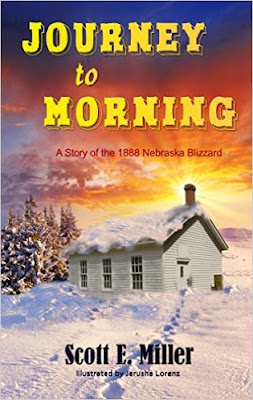By Chantelle Simoes
Nature/Outdoors
In 1939, scientists discovered that a chemical first synthesized in 1874 was an excellent insecticide. The chemical is widely known as its notorious abbreviation, DDT. DDT was used with great success in the second half of World War II to combat malaria and typhus, and the chemist who discovered its insecticidal properties was awarded the Nobel Prize in 1948. It was not until several years later that scientists began investigating the chemical's effects on non-target organisms, especially birds.
In 1962, Rachel Carson's pioneering and controversial book
Silent Spring chronicled the environmental impact of pesticides including DDT. The chemical, she wrote, was a potent toxin that accumulated in the environment and in the fats of animals who ate any plant or animal material that was contaminated. The chemical has an ability to accumulate at higher and higher concentrations in animals higher up on the food chain. For example, if an earthworm ingests soil contaminated by DDT, the amount that accumulates within its tissues is much less than the amount that will remain in the sparrowhawk that eats the songbird that ate the earthworm.
DDT had an enormously negative affect on bird life. The chemical caused reproductive problems in many species, resulting in eggshell thinning that was catastrophic in scale. The chemical was thought to restrict the transportation of calcium carbonate, the main structural ingredient in the egg's protective shell, from the blood to the eggshell gland. For years, species such as the Brown Pelican, Peregrine Falcon, Bald Eagle, and Osprey showed dramatically reduced reproductive success, as their eggs would break under the weight of the adults' bodies.
From the 1950s to the 1970s when DDT was banned, these bird species experienced a severe population decline. The Peregrine Falcon even became locally extinct in the eastern United States. In 1967, Bald Eagles were listed as endangered on the precursor to the Endangered Species Act, likely as a result of the impact of DDT on their ability to reproduce. California condors, another species that was especially affected by the chemical, were reduced to a population of only several dozen individuals.
Beginning in the 1960s and 1970s when DDT was discovered as the cause of eggshell thinning, scientists mounted a nationwide conservation effort to increase the populations of birds most effected by DDT. Biologists began a captive-breeding program for Peregrine Falcons to reintroduce juvenile birds into the wild. In the mid-1980s, the 22 remaining California condors were captured to initiate a carefully-planned breeding program that has become the most expensive wildlife conservation program in U.S. history. Fortunately, the populations of these species have recovered, thanks to the efforts of these conservation programs. The Peregrine Falcon was removed from the Endangered Species List in 1999, and the Bald Eagle in 2007. Brown Pelicans have begun nesting in islands in the Gulf of Mexico for the first time in nearly a century. The California condor continues to improve steadily, although for these long-lived birds, the process has been much slower. Success stories such as these continue to prove that dedicated conservation efforts can bring even the most imperiled species back from the brink of extinction.
If you're looking for the perfect Birdhouses, Bird feeders, bird house kits, Birdwatching Binoculars, and More, visit YourBirdOasis.com!
 Silent Spring
Silent Spring, by Rachel Carson. Silent Spring, released in 1962, offered the first shattering look at widespread ecological degradation and touched off an environmental awareness that still exists. Rachel Carson's book focused on the poisons from insecticides, weed killers, and other common products as well as the use of sprays in agriculture, a practice that led to dangerous chemicals to the food source. Carson argued that those chemicals were more dangerous than radiation and that for the first time in history, humans were exposed to chemicals that stayed in their systems from birth to death. Presented with thorough documentation, the book opened more than a few eyes about the dangers of the modern world and stands today as a landmark work...
More
 DDT, Silent Spring, and the Rise of Environmentalism
DDT, Silent Spring, and the Rise of Environmentalism, by Thomas R. Dunlap. No single event played a greater role in the birth of modern environmentalism than the publication of Rachel Carson's "Silent Spring" and its assault on insecticides. This collection of documents, the first of its kind, traces shifting attitudes toward DDT and pesticides in general through a variety of sources: excerpts from scientific studies and government reports, advertisements from industry journals, articles from popular magazines, and the famous "Fable for Tomorrow" from "Silent Spring".Beginning with attitudes toward nature at the turn of the twentieth century, the book moves through the use and early regulation of pesticides; the introduction and early success of DDT; the discovery of its environmental effects; and the uproar over "Silent Spring"...
More
"A child's world is fresh and new and beautiful, full of wonder and excitement.
It is our misfortune that for most of us that clear-eyed vision,
that true instinct for what is beautiful and awe-inspiring,
is dimmed and even lost before we reach adulthood." - Rachel Carson




